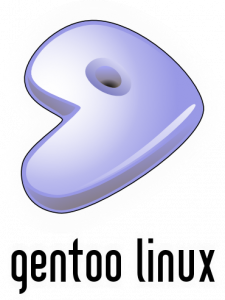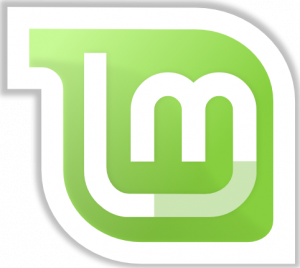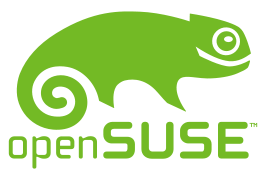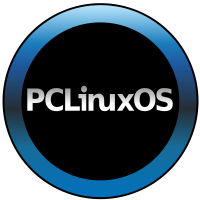The Ultimate Guide to Linux – Top 10 Distributions

Over the last six to seven years Linux has become more and more popular. With several distributions putting their focus on ease of use and user friendliness, more and more people are giving Linux a chance. Gone are the days where Linux is associated with uber nerds sporting long gray beards, suspenders, and the fashionable propeller beanie.
Once you make the decision to try out Linux, your next choice is what distribution to get. There are many flavors of Linux available for you to try free of charge, but which one is right for you? Below I have outlined ten major distributions that range from beginner friendly to versions suitable for more hardcore computer users that are all about performance and cutting edge software. The best part is that most of these distributions offer a way to try out the software before committing to installing it so they are easy to test drive.
CentOS
 CentOS was founded by Lance Davis and launched on May 14, 2004. It is a community supported distrubution based on Red Hat Enterprise Linux. CentOS stands for Community ENTerprise Operation System. It is the most popular Linux distribution for web servers. The distrubution is not affiliated with any company and relies on donations.
CentOS was founded by Lance Davis and launched on May 14, 2004. It is a community supported distrubution based on Red Hat Enterprise Linux. CentOS stands for Community ENTerprise Operation System. It is the most popular Linux distribution for web servers. The distrubution is not affiliated with any company and relies on donations.
Major releases for CentOS are scheduled every two to three years with minor updates, also called point releases, every six to nine months. There are not any considerable features and very few software package updates in the minor releases. CentOS version numbers have two parts, a major version and a minor version. Each number for the major and minor version match the Red Hat Enterprise Linux version from which the source packages were used to build CentOS.
CentOS is free of charge with support provided primarily by the community of users. There are a number of ways to install the operating system including Live CD and Live USB.
Debian
 Debian was first released on August 16, 1993, by Ian Murdock. The software is developed by over 1,000 volunteers and contains more than 20,000 packages in its software repositories. Debian is not sponsored by any company and relies on donations.
Debian was first released on August 16, 1993, by Ian Murdock. The software is developed by over 1,000 volunteers and contains more than 20,000 packages in its software repositories. Debian is not sponsored by any company and relies on donations.
There have been ten major stable releases of Debian. Major releases for Debian are on a two year cycle, there have not been any point releases since 3.1 was released in October 2005. While this type of release schedule is great for stability it results in the distrubution not being up to date and aging very quickly. The code names for each release come from the names of “Toy Story” characters with the latest release, 5.0, being named ‘Etch’.
You can try out Debian without installing it on your hard drive with the Debian Live system, which can be booted from removable media like CDs, DVDs, and USB drives, or over a network via netboot. There is a Debian Installer included on the CD when you are ready to install the software on your hard drive. A tool called live-helper can assist your in creating a custom image that is bootable from removable media as well as netboot.
The latest release of Debian is version 5.0.6 (“Lenny”) released on September 4, 2010.
Fedora
 The initial release of Fedora was on November 16, 2003. It is a community supported distribution that was created when development of Red Hat Linux was discontinued. The Fedora Project is administered by a board who is elected by the Fedora community. Fedora is the second most popular Linux operating system.
The initial release of Fedora was on November 16, 2003. It is a community supported distribution that was created when development of Red Hat Linux was discontinued. The Fedora Project is administered by a board who is elected by the Fedora community. Fedora is the second most popular Linux operating system.
New versions of Fedora are released once every six months with each version being supported for 13 months from the date of release. This relatively short support period can cause issues for developers more interested in support for the long term instead of cutting edge software.
Fedora is distributed on CD/DVD, live images, and minimal CD, which is used for installation over FTP, NFS, or HTTP. You can also get custom images that are built with a specific kind of user in mind, these are called Fedora spins.
Fedora 13 is the lastest stable version and was released on May 25, 2010.
Gentoo
 Gentoo linux was started by Daniel Robbins as Enoch Linux. The first release of Gentoo was March 31, 2002. It is free and open source but does include a few proprietary software packages. One of the major differences between Gentoo and other distributions is that the user compiles the source code for their configuration of choice locally.
Gentoo linux was started by Daniel Robbins as Enoch Linux. The first release of Gentoo was March 31, 2002. It is free and open source but does include a few proprietary software packages. One of the major differences between Gentoo and other distributions is that the user compiles the source code for their configuration of choice locally.
Currently the developers of Gentoo have scheduled weekly builds instead of annual releases. In 2004 the version numbering system was switched to use the year with the point release coinciding with which release that version was for that year. For example, 2005.0 would be the first release in 2005. Gentoo becomes versionless once it is installed and an emerge update is completed, this ensures the system is always has the most up-to-date software packages available.
There are many ways to install Gentoo with the minimal CD method being the most popular. Similiar to other Linux distributions you can also install it with other versions already operating.
The current release of Gentoo is 10.1 which was released on October 10, 2009.
Linux Mint
 Linux Mint was first released on August 27,2006, and is based on Ubuntu. This distributions’ focus is on stability and user friendliness and is great for users who have never used Linux.
Linux Mint was first released on August 27,2006, and is based on Ubuntu. This distributions’ focus is on stability and user friendliness and is great for users who have never used Linux.
Two releases are scheduled per year for Linux Mint with each release getting both a new version number and a code name. The convention used for the code name is a female name with the version number corrensponding with the letter in the alphabet and ending with the letter “a”, for example version 7.0 was code named Gloria. Releases are scheduled to be about one month after Ubuntu releases which ensures that each Linux Mint release comes with updated X and GNOME software.
Installation via Live CD is the most popular method for installing Gentoo. You can run the OS directly from the Live CD to try out the software before you commit to installing it. There are also images available which can be run from a CD, DVD or directly from the hard drive.
The lastest version of Gentoo was released on May 18, 2010 and is version 9.0 (“Isadora”).
Mandriva
 Mandriva Linux was previously known as Mandrake Linux, the name change a result of a trademark infringement. It was first released on July 23, 1998, and was originally based on Red Hat Linux. It has since seperated from Red Hat and now includes several original tools.
Mandriva Linux was previously known as Mandrake Linux, the name change a result of a trademark infringement. It was first released on July 23, 1998, and was originally based on Red Hat Linux. It has since seperated from Red Hat and now includes several original tools.
The release schedule for Mandriva is on a 6-month cycle similar to Fedora and Ubuntu. Each release is supported for up to 18 months for updates such as the Linux kernel and system software, and 12 months for desktop updates such as web browsers, desktop environments, and more. Server versions are supported for 24 months after being released. As of version 11 the versioning system was changed from a traditional numbering system to using a year based system.
There are several different editions of Mandriva Linux. These include Mandriva Linux Free, which is the standard downloadable version; Mandriva Linux One, a cross between a Live CD and an installer; and Mandriva Linux Powerpack, the commercial version of Mandriva Linux. Discontinued editions include Mandriva Linux Discovery and Mandriva Linux Powerpack+.
Mandriva Linux’s latest stable release is version 2010.1 which was released on July 8, 2010.
openSUSE
 Development of openSUSE is by the openSUSE Project with the first release being in March 1994. Novell purchased the project in 2003 but has kept community involvement a high priority. openSUSE is targeted at consumers, small businesses, and the development community.
Development of openSUSE is by the openSUSE Project with the first release being in March 1994. Novell purchased the project in 2003 but has kept community involvement a high priority. openSUSE is targeted at consumers, small businesses, and the development community.
The openSUSE Project’s intent is to have a new release every eight months. Up until version 11.2 each release was supported with critical updates for two years from the date of release. Starting with 11.2, critical updates will be provided for two releases plus two months which will be approximately every 18 months under the current release cycle.
openSUSE is free open source software and can be downloaded or purchased in a retail box. You can get openSUSE in several different editions which include the Download Edition, a downloadable ISO; Retail Edition, available in a retail box from Novell; FTP, version available for an over the network install; and Factory, a continuous development version from which developers take snapshots to create the stable openSUSE releases.
The latest version of OpenSUSE is 11.3 and was released on July 15, 2010.
PCLinuxOS
 PCLinuxOS started out as a set of RPM packages created by Bill Reynolds, better known as Texstar, to improve Mandrake Linux. He started this project because he was tired of the fighting between developers for other distributions. In October 2003 a fork of Mandrake 9.2 was made to create the first independent release of the PCLinuxOS operating system.
PCLinuxOS started out as a set of RPM packages created by Bill Reynolds, better known as Texstar, to improve Mandrake Linux. He started this project because he was tired of the fighting between developers for other distributions. In October 2003 a fork of Mandrake 9.2 was made to create the first independent release of the PCLinuxOS operating system.
Releases are controlled by Texstar and do not folow any kind of road map. Versions are released when all known bugs have been fixed. While this is great as far as stable releases go, this results in an unusually long development time. With the release in January of 2008 PCLinuxOS started following the Mandriva versioning system by using the year.
Distribution is via the traditional downloaded ISO as well as a version called “MiniMe” which is a minimal Live and Install CD. MiniMe is ideal for hardcore users who wish to start with a base and build the installation with their own selection fo software packages. PCLinuxOS is also distributed by several third parties including Karoshi and the BEL Project.
PCLinuxOS was last released on July 5, 2010, with version 2010.7.
Slackware
 In 1993 developer Patrick Volkerding released a modified version of the Softlanding Linux System and called it Slackware. The first stable release of Slackware was on July 16, 1993. It is the oldest Linux distribution still in development. The name comes from the fact that the distribution began as a personal side project with no commitment.
In 1993 developer Patrick Volkerding released a modified version of the Softlanding Linux System and called it Slackware. The first stable release of Slackware was on July 16, 1993. It is the oldest Linux distribution still in development. The name comes from the fact that the distribution began as a personal side project with no commitment.
Major versions of Slackware are released every 18 to 24 months with one to two minor releases a year. Slackware uses a standard versioning system. In 1999 the version went from 4 to 7 as a marketing ploy by Volkerding to show that Slackware was just as current as other distributions which were currently on version 6.
Slackware can be downloaded via a torrent on their website or you can order the latest version on CD (includes 7 CDs total) or a single DVD from The Slackware Store.
The latest stable version of Slackware is 13.1, released on May 24, 2010.
Ubuntu
 Ubuntu was first announced in September of 2004 and was officially released on October 20, 2004. It was created by Mark Shuttleworth, a South African entrepeneur and former Debian developer. Shuttleworth’s UK-based company, Canonical Ltd., funds the project. Ubuntu is the most popular Linux-based operating system.
Ubuntu was first announced in September of 2004 and was officially released on October 20, 2004. It was created by Mark Shuttleworth, a South African entrepeneur and former Debian developer. Shuttleworth’s UK-based company, Canonical Ltd., funds the project. Ubuntu is the most popular Linux-based operating system.
Releases are scheduled for twice a year and timed to be approximately one month after the GNOME release, which is one month after the release of X.org. Because of this each release has an updated version of both X and GNOME. The version number for each Ubuntu release is determined by the month and date it came out, so version 10.10 will be released in October of 2010. Each release also has a code name that uses an adjective and an animal (e.g. “Feisty Fawn”) which are in alphebetical order, with the exception of the first three releases. There are three releases labeled “LTS” which is Long Term Support which indicates these versions are supported for five years on servers and three years on desktops. The current LTS versions are 6.06, 8.04, and 10.04. Non-LTS versions of Ubuntu are only supported for 18 months.
The most common way to install Ubuntu is via Live CD. You can also download and burn an .iso to a CD which requires a minimum of 256 MB of RAM, in addition to that, an image can also be run from a hard drive. A Ubuntu CD can be requested from Canonical at no cost to most countries.
Ubuntu is on version 10.04.1 which was released on August 17, 2010.
Grand Finale
This article showcases a great assortment of Linux distributions. If you want to try out Linux, go ahead and burn a Live CD and check out the operating system for yourself. You will find hours and hours of exploring and fun if you decide to do this.
As previously mentioned, there are many more distributions of Linux not listed in this article, so please feel free to let us know which is your favorite in the comments.
